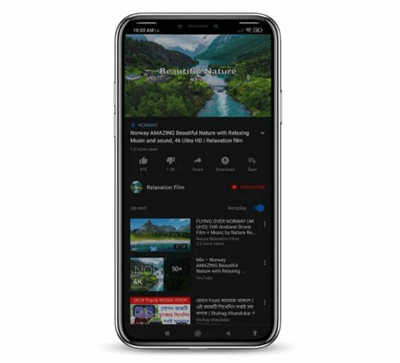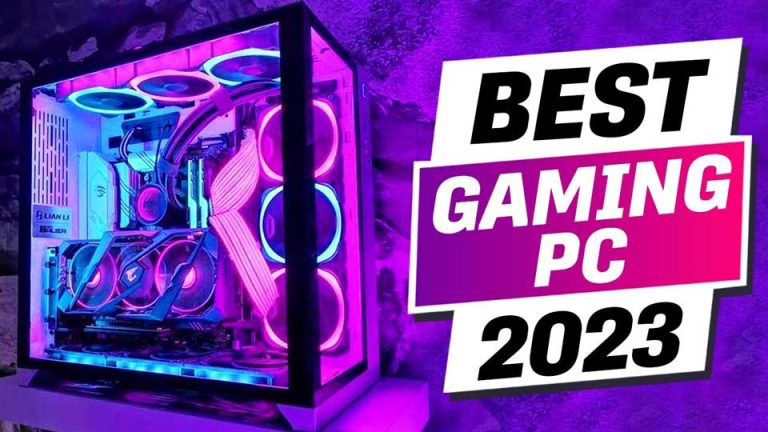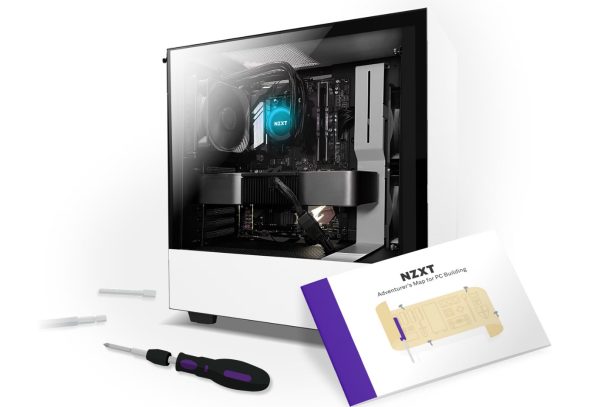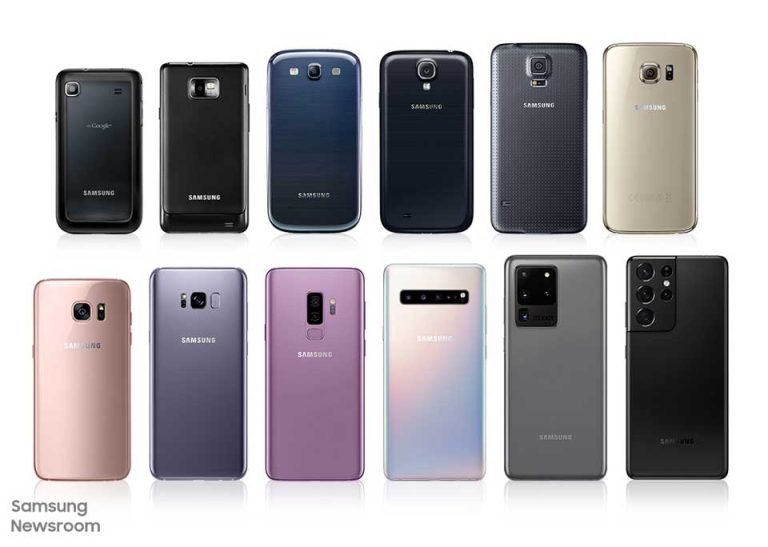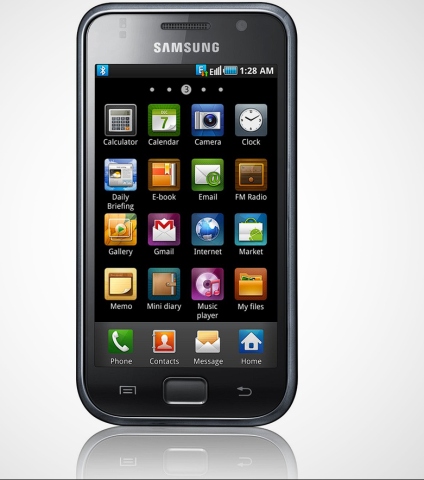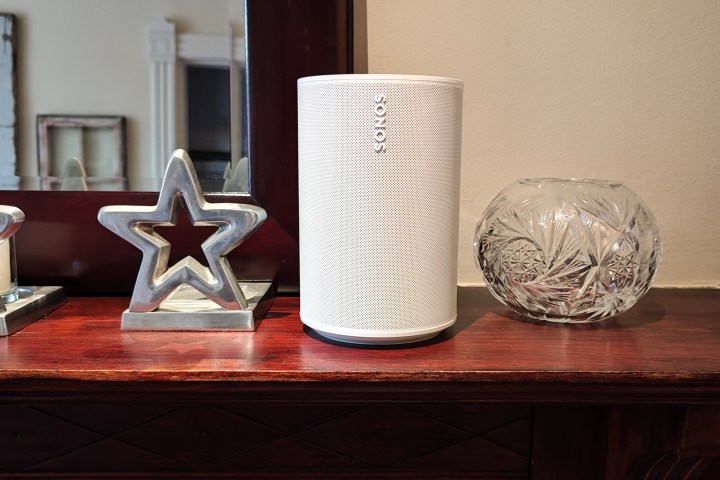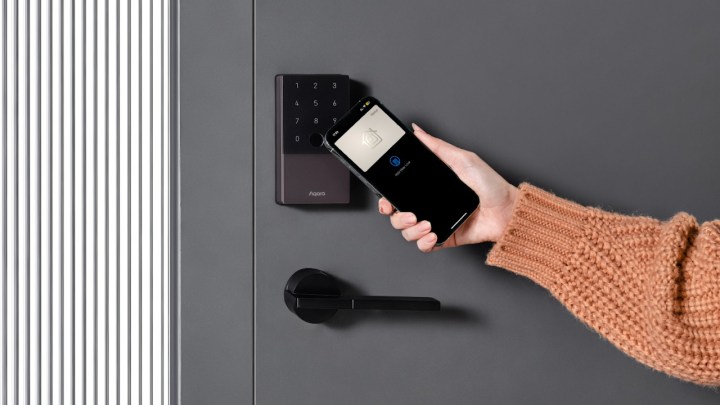Best Data Recovery Software for Mac 2024, Macs are beloved for their sleek design and high-tech capabilities, particularly among creatives across various fields. Yet, like any other computer, they are not immune to data loss, a situation that can be incredibly distressing for users.
To address this concern, we have delved into the world of data recovery software tailored for Mac. In this article, you’ll find insights that will guide you in selecting the ideal solution to restore your valuable data, ensuring you’re well-prepared for any unforeseen data loss scenarios.
Key Criteria for Selecting Mac Data Recovery Software
There are many data recovery solutions from which to choose when data loss strikes your Mac. Several factors may influence which one you choose to use to recover your lost data. Here are some things to consider when naming your selection.
In order for you to gain a better understanding of the situation in the Mac data recovery software market, we have prepared a diagram with interesting statistics for you.
The data for this chart was sourced from Google Ads and represents the average number of monthly searches in English worldwide. We combined various instances of writing the names of the same software (e.g., “easeus data recovery mac”, “easeus data recovery wizard for mac”, “easeus for mac”).
Stellar Data Recovery has restricted access to similar data in Google Ads for their brand. According to third-party services, the popularity of the brand (query) “Stellar Data Recovery (for) Mac” is approximately 500 queries per month. While R-Studio for Mac has numerous monthly searches, we did not include them all, as “R-Studio for Mac” can also refer to RStudio, an integrated development environment (IDE) for the R programming language, not just data recovery software.
Top 10 Best Data Recovery Software for Mac
Read More : Best Instagram Alternatives For Android – iOS 2024
So, here’s an overview of ten of the best data recovery software solutions for Mac. We’ve included paid, freemium, and freeware data recovery applications for your Mac or MacBook.
1. Disk Drill for Mac

Disk Drill is a comprehensive data recovery tool that makes it easy for anyone to restore accidentally deleted files and folders.
Pros:
Cons:
User Experience
Disk Drill simplifies the data recovery process, making it easy for anyone to recover their lost and deleted data. With just a few clicks, you can select the disk for recovery and start scanning the device for recoverable files and folders. Quick or deep scans can be employed to control the recovery and locate the maximum number of items to be restored.
Effective filters help control the scanning and recovery process by allowing you to focus on the files that matter. Scans can be paused and resumed at any time to make it more convenient to recover your lost data. When the scan is complete, the results can be mounted as a virtual disk, streamlining the recovery process.
The inclusion of the free data protection tools Recovery Vault and Guaranteed Recovery helps you keep your valuable information safe and furnish a simplified recovery method if you accidentally deleted a protected file. The tool is a comprehensive data recovery and protection solution that keeps your files and folders secure.
Free limits: You can preview all recoverable files with the free version of Disk Drill.
Price: $89.00
OS version: Disk Drill supports all versions of the Mac operating system from macOS X 10.5 to macOS Ventura.
2. R-Studio for Mac

This product was developed for data recovery professionals and includes many features that are not usually required for individual use.
Pros:
Cons:
User Experience
R-Studio is a full-featured recovery application that is suitable for professional use. It has an impressive number of features that, in some cases, may over-complicate the recovery process for inexperienced users. The advanced capabilities of the tool include the ability to repair damaged RAID implementations and perform network data recovery. Excellent documentation is available that covers all types of data recovery situations.
You can preview recoverable files with the demo version before making a financial commitment and the application provides a wealth of advanced features. At times, it can be hard to locate specific features in the tool’s interface. It’s worth the effort if you need access to its hexadecimal editor or disk copy module. R-Studio provides an excellent recovery application tailored to the needs of professionals and advanced computer users.
Free limits: File preview of recoverable files is available for free.
Price: $79.99 for the basic version
OS version: macOS X 10.5 through macOS 12 Monterey.
3. iBoysoft Data Recovery for Mac
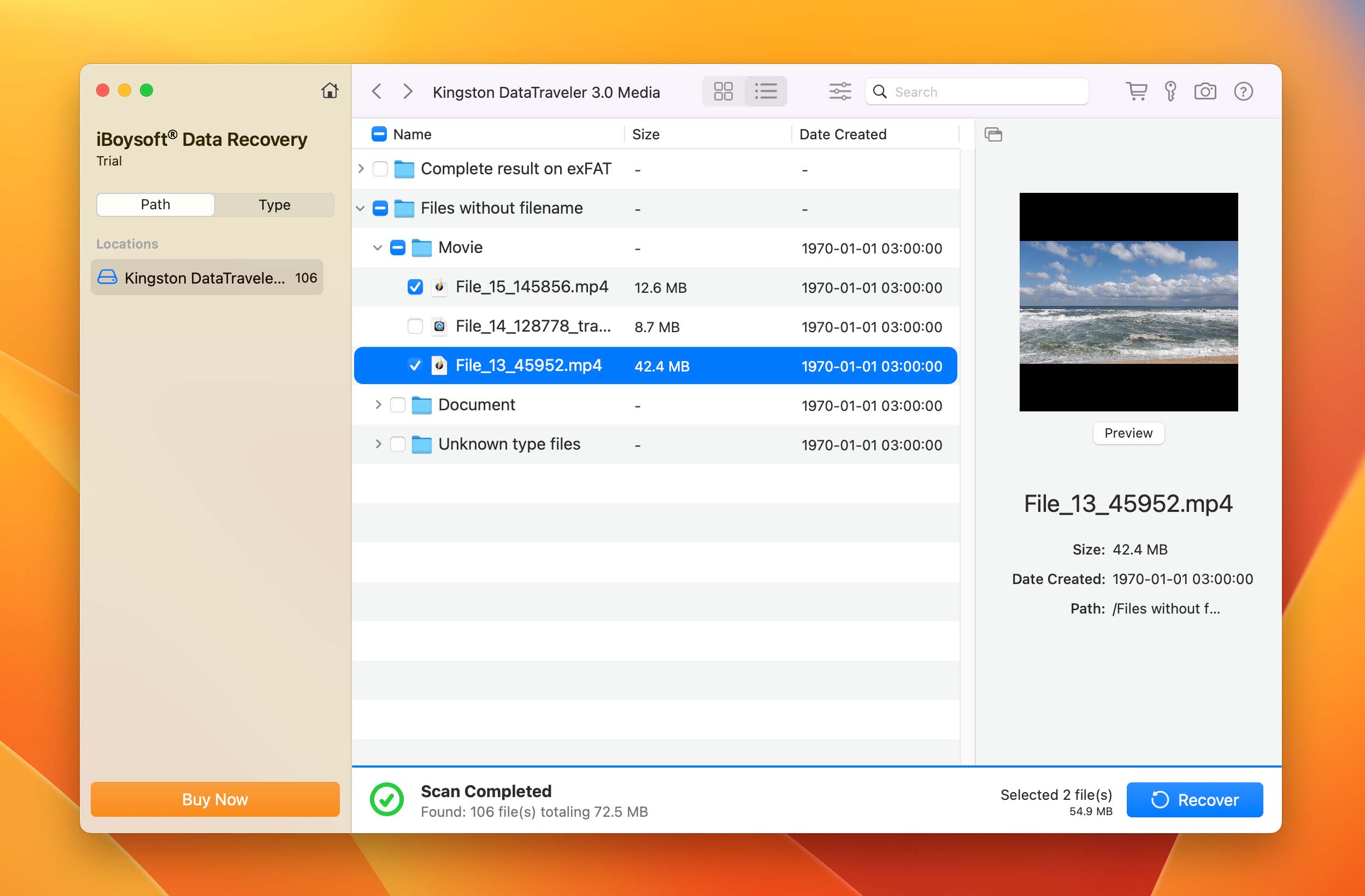
iBoysoft Data Recovery is a versatile recovery tool for Mac that lets you get back lost and deleted files from a wide variety of storage devices. The application can help you address a Mac that won’t boot or recover files lost from an emptied Trash bin. You can also obtain a version of the software for the Windows platform.
Pros:
Cons:
Download iBoysoft Data Recovery
User Experience
Recovering data with iBoysoft is simple enough that any Mac user can perform the activity. The software uses a three-step process that scans a device, previews recoverable data, and lets you choose which files you want to recover. A free download lets users recover 1 GB while they test-drive the product.
The tool supports over 1000 different file types and can recover just about any type of data deleted from your Mac. Virtually all disk-based storage devices are supported including SD cards and external USB drives. This software solution can help users recover from multiple data loss scenarios including formatted disks and emptied Trash bins. It offers a simple tool with professional-grade recovery functionality.
Free limits: 1 GB free recovery with the free version of the tool.
Price: A monthly license is $89.95 and a yearly license is $99.95
OS version: macOS all versions, including macOS 13 Ventura.
4. Data Rescue for Mac

Data Rescue 6 is a paid data recovery solution for Mac that supports the newest versions of macOS and machines running the M1/M2 chip.
Pros:
Cons:
User Experience
Data Rescue 6 for Mac is a commercial data recovery tool that enables new users to preview recoverable files and folders for free. The solution supports the recovery of hundreds of file formats including all popular types found on your Mac. Users can recover data from all types of disk-based storage devices including internal drives, SD cards, and external disks.
You can clone your hard drive with the software to protect valuable data from hardware failure. Quick and deep scanning options let you control recovery and help locate hard-to-find items. Users can store up to 15 scans for historical comparison. Data Rescue 6 also provides virtual RAID support to assist with recovering data from a failing RAID configuration.
Free limits: Scan and preview recoverable files.
Price: Standard license $79/Professional license $399
OS version: macOS 10.12 through macOS 13 Ventura.
5. PhotoRec for Mac

This freeware recovery tool is compatible with all versions of Mac operating systems and provides a command-line user interface.
Pros:
Cons:
User Experience
Users who are not intimidated by a command-line interface will find PhotoRec to be a valuable piece of freeware. It supports all versions of the Mac operating system as well as Windows and Linux systems. The tool supports an impressive array of file types and filesystems, making it ideal for a variety of data recovery scenarios.
The menu-driven, command-line interface does require some knowledge of the underlying system that more intuitive applications keep hidden from users. This can make the tool hard to operate for inexperienced computer users. Another drawback of this tool is that files are recovered with generic names, forcing users to review and rename them after recovery is completed.
Free limits: unlimited free recovery.
Price: Freeware
OS version: all latest versions of macOS are supported.
6. EaseUS Data Recovery Wizard for Mac
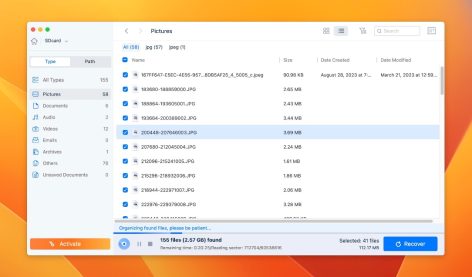
EaseUS Data Recovery Wizard provides user-friendly file recovery software for Mac systems.
Pros:
Cons:
Download EaseUS Data Recovery Wizard
User Experience
Recovering files with EaseUS is a simple process that anyone can perform with a few clicks. Select the device to be scanned and the tool will return a list of recoverable data that it can restore. The results can be filtered in multiple ways to make it easier to find the specific files that interest you.
The tool can be a little slower than other paid solutions which could be an issue when recovering a large amount of data. While this may be annoying to some users, the recovery results themselves were very good. A little patience may be required when using this too, but in the end, you should be satisfied with the recovery results.
Free limits: The free tool can preview recoverable files on Mac and restore up to 2 GB of data.
Price: $89.95
OS version: Supports all versions of the macOS operating system.
7. Wondershare Recoverit for Mac

Pros:
Cons:
Download Wondershare Recoverit
User Experience:
Wondershare Recoverit is a commercial data recovery solution for Mac that supports a wide variety of storage devices and file formats. The tool features a simple user interface that makes it easy for anyone to recover accidentally lost and deleted data. Just a few clicks and you can start recovering lost files and folders.
Recoverit offers users a quick and deep scan option. Usually, it’s best to try a quick scan first and reserve the deep scan for when your files can’t be found. Deep scan performs a signature-based search that may be necessary to recover from drive corruption of formatting. This tool can also repair corrupted videos in various formats including MOV, ACI, and MP4.
Free limits: Free recovery of up to 100MB.
Price: Individual $79.99-$139.99 per year.
OS version: macOS 10.10 through macOS 13 Ventura.
8. Stellar Data Recovery for Mac
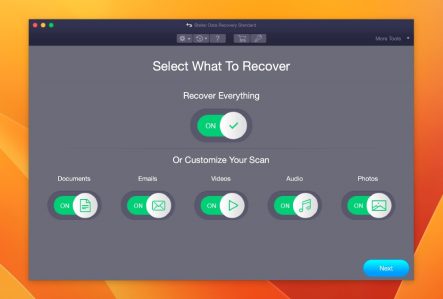
Stellar Data Recovery provides a complete macOS data recovery software solution that can recover lost files due to accidental deletion, formatting, or drive corruption.
Pros:
Cons:
Download Stellar Data Recovery
User Experience
This file recovery software is easy to use and provides advanced functionality that can help recover long-lost files. It’s designed to recover lost files for all users from novices to experienced Mac owners. The tool supports all major file formats and can recover data on virtually any type of disk-based device.
The personal version of the tool is most suitable for recovering internal system files. If you want to recover lost files from USB drives or other storage devices, you should look into the premium versions of this recovery software. The premium tool also can repair corrupt videos and photos. All in all, this file recovery software solution for macOS provides a satisfactory data recovery experience.
Free limits: The free tool can preview recoverable files on Mac and restore up to 1 GB of data.
Price: $79.99 for the personal version, $99.99 premium version, and $149 for the technician version of this macOS data recovery software.
OS version: Supports all versions of the macOS operating system.
9. Mac Free Any Data Recovery

This file recovery software for Mac is an all-purpose tool that retrieves lost data in many different situations.
Pros:
Cons:
Download Mac Free Any Data Recovery
User Experience
The user interface of this Mac recovery software is a little harder to navigate than some competing products. This can make it hard for new users to locate some of its features so they can efficiently recover their lost data. Once users get comfortable with the interface the tool is not difficult to use.
Many different types of files can be recovered with this tool including video and audio formats not found in some other solutions. The recovery performance is good, and files are recovered reasonably quickly. You can use this solution to recover files from your internal hard drive as well as from all types of disk-based storage devices.
Free lifetime updates and a 90-day money-back guarantee are very nice features of this software solution. One potential issue is that payment is conducted through a third-party processor which may discourage some users from purchasing the tool.
Free limits: The trial version of this Mac recovery software can be used to restore up to 2 GB of data.
Price: $59.99 for one computer, $119.99 for unlimited computers.
OS version: Supports all versions of the macOS operating system.
10. DiskWarrior

Pros:
Cons:
User Experience:
Disk Warrior is a tool designed to prevent and resolve directory damage to your Mac that can lead to inconsistent performance and instability. The solution rebuilds a disk by recovering data from the original directory. The new directory is optimized for improved performance.
DiskWarrior focuses exclusively on creating error-free directories to recover lost files and prevent disk errors. The tool supports SMART monitoring and can be configured to automatically check drive health so you can address issues before being faced with a hardware failure. DiskWarrior ships on a flash drive that can be used to rebuild the directory of your Mac’s startup disk.
Free limits: No free trial available
Price: $119.95 plus shipping for the included flash drive
OS version: OS X 10.8 – macOS 13 Ventura
Honorable Mentions
We chose to exclude the following software solutions from our list of reliable data recovery tools. While they may work for you, we suggest that you stick to our recommended products for the best recovery results.
Views: 8









